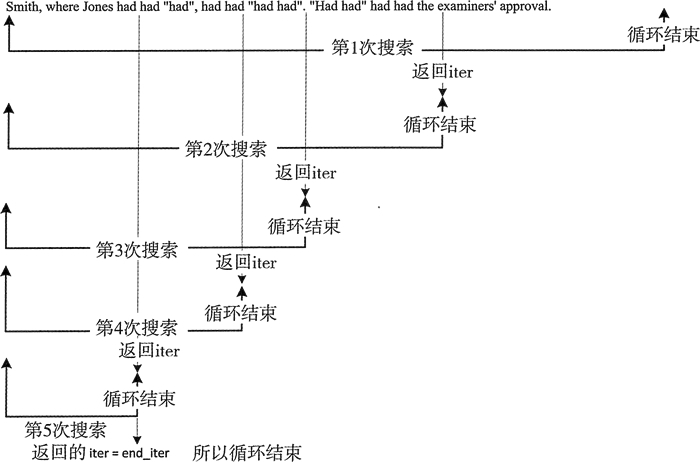C++ find_end(STL find_end)演算法詳解
2020-07-16 10:04:29
string text {"Smith, where Jones had had "had", had had "had had"." " "Had had" had had the examiners' approval."};
std::cout << text << std::endl;
string phrase {"had had"};
auto iter = std::find_end(std::begin(text), std::end(text), std::begin (phrase),std::end(phrase));
if(iter != std::end(text))
std::cout << "The last "" << phrase<< "" was found at index "<< std::distance (std::begin (text), iter) << std::endl;
這段程式碼會從 text 中搜尋“had had”的最後一個匹配項,並輸出如下內容:
Smith, where Jones had had "had", had had "had had" . "Had had" had had the examiners' approval.
The last "had had" was found at index 63
size_t count {};
auto iter = std::end(text);
auto end_iter = iter;
while((iter = std::find_end(std::begin(text), end_iter, std::begin(phrase), std::end(phrase))) != end_iter)
{
++count;
end_iter = iter;
}
std::cout << "n""<< phrase << "" was found " << count <<" times." << std::endl;
這個 while 迴圈表示式會進行這項搜尋工作。迴圈表示式會在 [std::begin(text),end_iter) 這個範圍內搜尋 phrase。最開始的搜尋範圍包含 text 中的全部元素。為了說明這裡發生了什麼,下面用圖 1 來演示這個過程。
圖 1 用 find_end() 反復搜尋